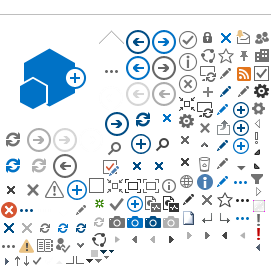The study compares the simulations of a number of widely used wheat models against high quality experimental water use data from Texas, USA and France. The environments studied are representative of many wheat growing regions including Spain, Australia. Egypt, Mexico and the USA. For these regions, most of the models show considerable shortcomings: on average, they underestimate water use by up to 15%, and in some cases by more than 30%.
The problem: if models are underestimating evapotranspiration, decisions based on them, whether in agriculture, policy or disaster preparedness, may be misinformed. It also suggests that previous studies on climate change impacts on wheat may have been too optimistic and not captured the threat of yield losses due to drought stress.
Missing data on crop water use is a major gap
The authors mention that many of the wheat models were originally developed and tested mainly considering data on easier to measure and observe above ground biomass and yield. In contrast, there is a lack of high-quality measurement data on crop water use – making model calibration and improvement difficult.
“Our results clearly show the urgent need for more experimental data on crop evapotranspiration,” explains Prof. Heidi Webber of ZALF, head of the study. “Only with such data can we improve models to simulate the impacts of drought on wheat yields. This is critical to understanding the impacts of extreme weather events on yields and food security”
The research team used data from advanced field experiments, including eddy covariance and large weighing lysimeters – specialised installations that allow for precise measurement of water use . The ZALF lead research team is currently assembling more eddy covariance data from around Europe and Canada to extend the study to more conditions. Dr. Xinxin Chen of ZALF comments, “These datasets are an incredibly valuable resource for model improvement, though not always immediately useable by crop modellers who also need detailed information about crop growth.”
What does this mean for future farming?
Climate change is expected to cause longer and more frequent droughts, particularly in already dry regions. To provide reliable yield forecasts and adapt farming systems accordingly, models must be better able to capture drought impacts and extreme conditions.
“When we underestimate the impact of drought, we risk making poor decisions for our future food supply,” says Prof. Webber from ZALF. “Our work aims to support risk management and helping to decide whether it makes sense to invest in risk reduction with stress tolerant varieties or irrigation, or whether financial and institutional risk management approaches like insurance are more effective. In the end, we want to support identifying options towards more sustainable and climate-resilient cropping systems”
Their study suggests crop models need to better simulate atmospheric water demand to best improve existing models and more accurately represent expected yield losses caused by drought and dryness.
Further information:
Link to the original publication: https://doi.org/10.1016/j.fcr.2025.110032
DOI: 10.1016/j.fcr.2025.110032
Note on this text:
This is a summary of the original publication generated with the assistance of artificial intelligence:
H. Webber, D. Cooke, C. Wang, S. Asseng, P. Martre, F. Ewert, B. Kimball, G. Hoogenboom, S. Evett, A. Chanzy, S. Garrigues, A. Olioso, K.S. Copeland, J.L. Steiner, D. Cammarano, Y. Chen, M. Crépeau, E. Diamantopoulos, R. Ferrise, L. Manceau, T. Gaiser, Y. Gao, S. Gayler, J.R. Guarin, T. Hunt, G. Jégo, G. Padovan, E. Pattey, D. Ripoche, A. Rodríguez, M. Ruiz-Ramos, V. Shelia, A.K. Srivastava, I. Supit, F. Tao, K. Thorp, M. Viswanathan, T. Weber, J. White (2025). Wheat crop models underestimate drought stress in semi-arid and Mediterranean environments. Field Crops Research, 332, 110032, https://doi.org/10.1016/j.fcr.2025.110032, published Open Access / under the license CC BY 4.0, https://creativecommons.org/licenses/by/4.0/. The text has been carefully reviewed and edited in accordance with the AI guidelines of ZALF.
Project partners:
